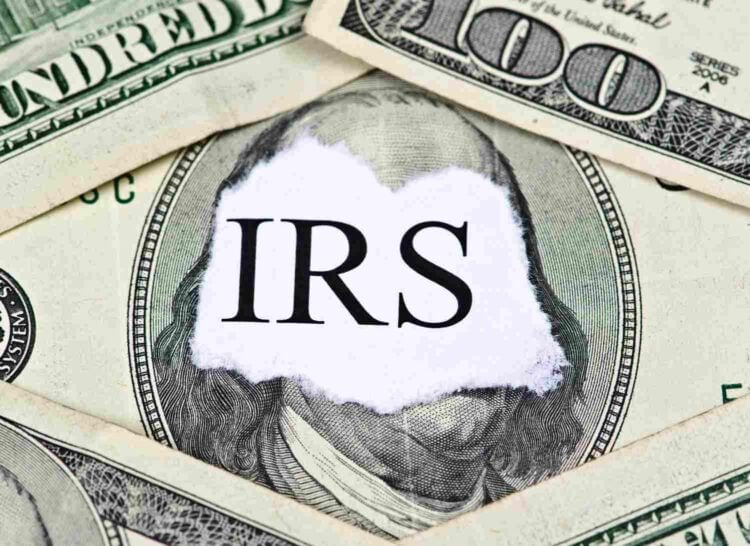
Receiving an unexpected refund check from the Internal Revenue Service (IRS) can trigger a strange mix of emotions. Is this a blessing or a trap?
On one hand, it’s exciting to think of unexpected money coming your way. On the other, there’s that nagging doubt: Is this a genuine surprise tax refund or a sophisticated scam?
Hi, I’m Michael Ryan. As a financial planner for nearly 30 years, I’ve helped countless clients navigate through the confusing (often intimidating) world of taxes. I understand that mix of emotions you’re feeling right now, because a check from the IRS without explanation feels like a test.
Treat every unexpected check as a question, not a deposit.
Rest assured, this guide will give you the answers. By the end, you’ll know exactly
- How to verify the check’s authenticity
- Understand the common reasons for a legitimate surprise refund
- And be able to spot the red flags of a potential scam.
Key Takeaways Ahead
Rule #1of Receiving an Unexpected Check from The IRS: Do Not Cash or Deposit the Check Yet
Before we go any further, this is the most important rule. Fight the urge to rush to your bank. Depositing a fraudulent check, even unknowingly, can lead to a world of financial headaches. From bounced check fees to having your bank account flagged.
With an IRS check, the bank is not your verification department. The IRS is.
📉 Bad Advice
The worst thing you can do is assume the check is legitimate and spend the money immediately. If the check is an error or a fake, you will be responsible for paying the full amount back, potentially with interest and penalties. Patience is your greatest asset here.
Your first step is not to spend, but to verify.
How to Verify the Check Is Real: Michael Ryan Money’s 3-Step Process
Verifying an IRS check is a methodical process. Follow these steps in order to protect yourself and get a definitive answer.
Step 1: Examine the Physical Check for Security Features
Genuine U.S. Treasury checks are printed with specific security features designed to prevent fraud. Get the check and look for these signs:
- Watermark: Hold the check up to a light. You should see a faint watermark of the text “U.S. TREASURY” that is visible from both the front and back.
- Microprinting: The line under the signature should not be a solid line. Under a magnifying glass, you’ll see it’s actually tiny text repeating “USA”.
- Bleeding Ink: The Treasury Seal to the right of the Statue of Liberty should have ink that will run and turn red when a small amount of moisture is applied.
If any of these features are missing or look wrong, you are likely holding a fake.
Step 2: Use the Official IRS Online Tools
Before spending time on the phone, use the IRS’s own digital tools. This is the fastest way to get confirmation.
- For Current Year Refunds:
Go to the official IRS “Where’s My Refund?” tool. You’ll need your Social Security number, filing status, and the exact refund amount shown on the check. - For Prior Year or Amended Returns:
If the check might be from a previous year or an amended return, use the “Where’s My Amended Return?” tool. I had a client who received a surprise $1,200 check; he was convinced it was a scam, but after a quick look at his online IRS account, we discovered it was from a Form 1040-X (Amended Return) his previous accountant had filed two years prior to correct a deduction.
He had completely forgotten about it.
Want more ways to improve your finances, join our complimentary newsletter to learn more!
Step 3: Call the IRS Directly (If Necessary)
If the online tools don’t give you an answer, the final step is to call the IRS. Use only the official numbers:
- Individuals: 800-829-1040
- Businesses: 800-829-4933
Be prepared for long wait times. When you get through, explain that you received an unexpected refund check and want to verify its legitimacy before taking any action.
3 Common Reasons for a Legitimate Unexpected IRS Refund Check
If you’ve verified the check is real, you’re probably wondering why you received it.
Ironically, the IRS’s own operational backlog and recent mass-processing of penalty waivers have created the perfect storm for scammers. Legitimate surprise checks are now more common, which means people are more likely to believe a fraudulent one is real. Here are the top legitimate reasons:
IRS-Corrected Errors:
The IRS’s computers often catch mistakes on tax returns. If they find a miscalculation or a credit you were eligible for but didn’t claim, they will correct the return and send you the difference. You will typically receive an official IRS notice (like a CP12) by mail explaining the change, but it often arrives a week or two after the check.
Automatic Penalty Relief:
As my client experienced, the IRS sometimes offers broad penalty relief. Recently, they automatically waived failure-to-pay penalties for the 2020 and 2021 tax years for millions of taxpayers. If you had already paid that penalty, they automatically mailed you a refund.
Unclaimed Credits or Stimulus Payments:
The IRS has been proactively issuing checks to taxpayers who were eligible for but did not claim certain credits, like the Recovery Rebate Credit (the official name for the COVID-era stimulus payments).
Red Flags: How IRS Refund Scams Actually Work
The most dangerous IRS scam check isn’t the one that looks obviously fake. It’s the one that looks almost perfect, because it makes you lower your guard. Scammers know that a ‘good enough‘ fake paired with a threatening phone call is more effective than a perfect fake alone.
💡 Michael Ryan Money Tip
The scam isn’t the fake check itself. The scam is the **follow-up**. Scammers want you to deposit the fake check, and then they contact you, posing as the IRS, to demand you “return” the “erroneous refund” to them via wire transfer or gift cards before the bank discovers the check is worthless.
I had a client deposit a fake check for over $2,000. Less than 24 hours later, he got a frantic call from a ‘Special Agent Smith‘ claiming the IRS had overpaid him. And that if he didn’t immediately wire transfer $1,500 to a specific account to ‘correct the error,’ a warrant would be issued for his arrest.
The scammer was so convincing that my client was about to do it. We were able to stop him just in time by confirming the check was worthless and that ‘Special Agent Smith’ was a ghost. It’s the urgency and fear that they’re selling.
A real IRS agent brings you information; a scammer brings you threats. Remember these red flags from the IRS’s official “Dirty Dozen” list of tax scams:
- The Aggressive Follow-Up Call: You receive a threatening phone call or email shortly after depositing the check.
- Demands for Specific Payment Methods: The real IRS does not demand payment in gift cards. The real IRS will not ask for a wire transfer. The real IRS does not accept cryptocurrency.
- Threats of Arrest or Legal Action: The real IRS communicates through the mail and will not threaten to have you arrested over the phone for a tax issue.
What to Do if You’ve Confirmed It’s a Scam
If you suspect fraud, do not engage.
- Report It: Contact the Treasury Inspector General for Tax Administration (TIGTA) to report the scam. You should also file a complaint with the Federal Trade Commission (FTC).
- Void the Check: Write “VOID” in large letters across the front of the check.
- Inform the IRS: Send a copy of the fake check along with a letter explaining the situation to the IRS.
Frequently Asked Questions About IRS Fake Check Scams
Can I keep an unexpected IRS refund check?
Only if you have verified it is legitimate and intended for you. Cashing a check sent to you by mistake (an erroneous refund) means you will have to pay it back, possibly with interest. Always use the verification steps in this guide before considering the money yours.
How long does it take for the IRS to send an explanation letter?
Typically, the official explanation notice (such as a CP12 notice) arrives separately within 7 to 14 days after you receive the check. The check comes from the U.S. Treasury, while the notice comes from an IRS processing center, so they are mailed at different times.
I already received my refund via direct deposit. Why did I get a paper check?
This is a common scenario for legitimate adjustments. Your initial refund was sent via direct deposit as you requested. Later, the IRS may have made a correction (like applying penalty relief) that resulted in a second, smaller refund. These subsequent adjustments are often issued as paper checks by default.
The Bottom Line: Trust, But Verify
An unexpected check from the IRS requires you to act like a detective, not a lottery winner. While it’s entirely possible the government owes you money due to recent tax law changes or automated corrections, the risk of sophisticated scams is too high to ignore.
Follow the process: examine the check, use the official online tools, and wait for the explanation letter. Never trust an unsolicited phone call that demands money or personal information. By taking these calm, methodical steps, you can confidently determine if that check is a welcome surprise or a scam to be avoided.
- Sharing the article with your friends on social media – and like and follow us there as well.
- Sign up for the FREE personal finance newsletter, and never miss anything again.
- Take a look around the site for other articles that you may enjoy.
Note: The content provided in this article is for informational purposes only and should not be considered as financial or legal advice. Consult with a professional advisor or accountant for personalized guidance.

